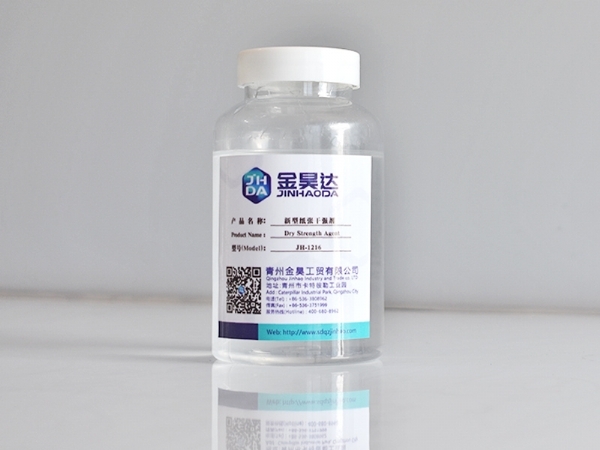Enquiry telephone
400-680-8962Qingzhou Jinhao new material Co., LTD
Add:No.19, Jingting Street, Caterpillar Industrial Park, Qingzhou City, Shandong Province,China
contact us 2021-2-21
2021-2-21Many water-soluble polymers that can form hydrogen bonds with fibers can be used as dry strength agents. In the early stage, starch and natural plant gum were used as raw materials for this product, and later developed oxidized starch, cationic starch, anionic starch, starch and other starch derivatives, water-soluble cellulose derivatives such as carboxymethyl cellulose, methyl cellulose and hydroxyethyl cellulose to increase the dry strength of paper. At the end of the 1950s, polyacrylamide, polyamine and other polymer and water-soluble resins were used in the paper industry, and achieved a better increase effect.

Formation mechanism of dry strength and strengthening mechanism of dry strength agent
Hydrogen bond strength is the main way to produce paper bond strength. Cellulose molecules contain quite a few hydroxyl groups. If a microfiber consists of 300-500 glucose units and each glucose group consists of three hydroxyl groups, there are a total of 900-1,500 hydroxyl groups. Therefore, many microfibers form relatively strong hydrogen bonds. From the point of view of molecular structure, it is a kind of polymer containing polyhydroxyl group.
The main enhancement mechanism is:
(1) The hydrogen bond forming group in the molecule forms a hydrogen bond with the hydroxyl group on the surface of the fiber, and the more hydrogen bond binding points, the stronger the binding force.
(2) is a dispersant, which can make the fiber more evenly distributed in the pulp, thereby increasing the binding point between the fiber and the fiber and the polymer, thereby increasing the dry strength.
Therefore, the dry strength agents are required to have some molecular weight and active groups, and can form hydrogen bonds with the hydroxyl group of the fiber to meet the strengthening requirements of the paper.